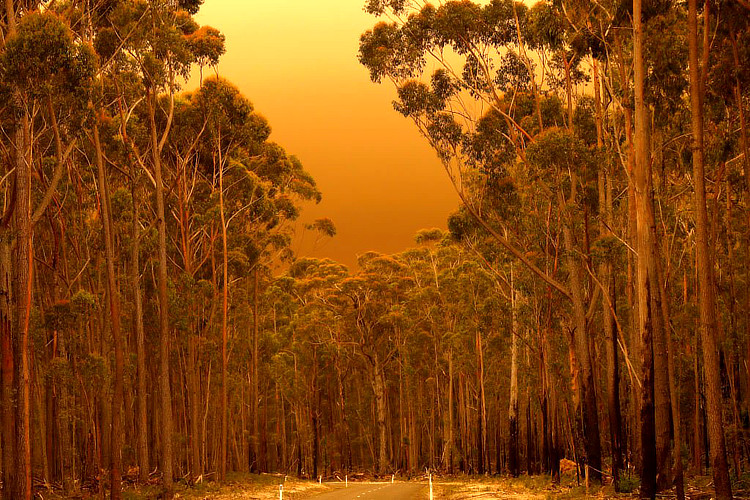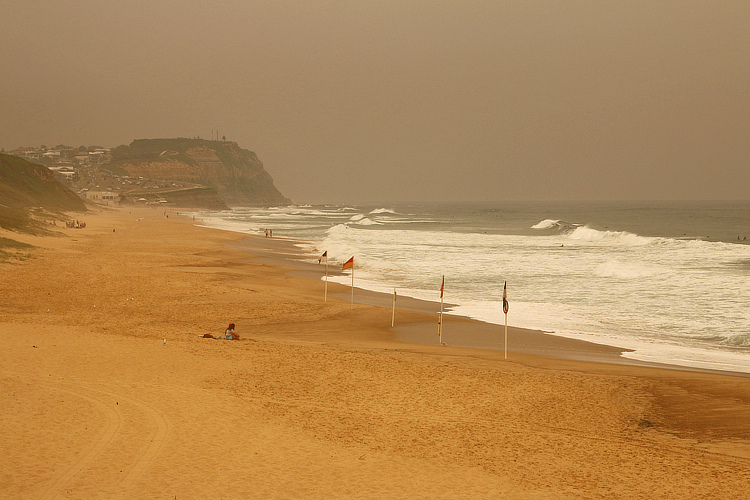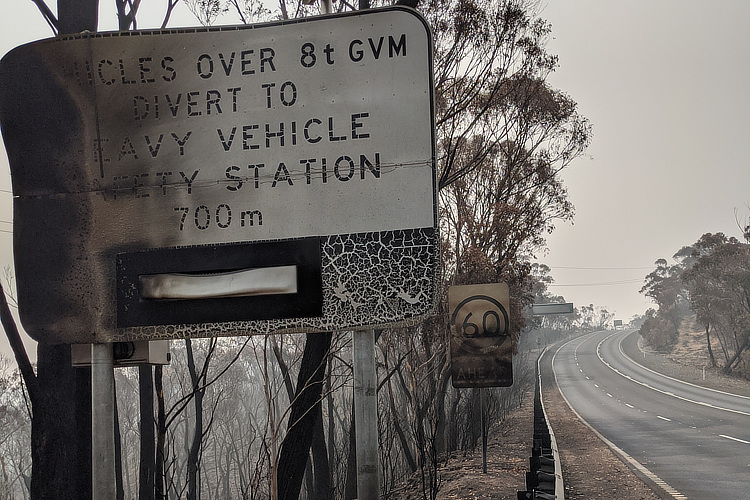The 2019–20 Australian bushfire season is already considered the worst in the country's history.
A combination of record-breaking heat, record-breaking drought, lightning strikes, high wind conditions, and arson ignited unprecedented raging fires across New South Wales (NSW) and southeast Australia.
The mega wildfires started in June 2019 and continued through 2020, affecting seven states and territories: NSW, Western Australia, Victoria, Queensland, South Australia, Northern Territory, and Tasmania.
As of January 7, 2020, the bushfire season consumed 20,800,000 acres (8,400,000 hectares) of land, the equivalent of 8.4 million football fields.
It is estimated that between 500 million and one billion animals - including koalas and kangaroos - have been killed.
NSW lost a third of its koala population and a third of its habitat.
On December 30, 2019, 4,000 residents of the East Gippsland region of Victoria were forced to flee to the sea as the raging flames advanced toward their homes.
It was one of the largest evacuations ever in Australia since, in 1974, Darwin evacuated more than 35,000 people in the aftermath of cyclone Tracy.

Death and Destruction
At least 27 people have lost their lives in the wildfires, and several are still missing.
The months-long bushfire crisis filled the atmosphere with ash and smoke and had an impact on the air Australians breathe.
In December 2019, the smoke in the Sydney region was so intense that air quality measured 11 times the "hazardous" level.
Canberra, the capital of Australia, was engulfed in thick smoke.
The extreme wildfires created enormous smoke clouds, and the skies turned purple and then hellish red, with ashes scattered everywhere, all over the country.
Pyro-cumulonimbus clouds have developed to altitudes over 16 kilometers in East Gippsland, generating fire-induced storms that spread fires through lightning, lofting of embers, and severe wind outflows.

Support the Australian Firefighters
The smoke produced by NSW wildfires traveled 2,600 kilometers and reached New Zealand's Auckland.
One-third of Kangaroo Island, a region famous for its protected nature reserves and native wildlife, has been burned and severely damaged by fire.
From August through to December 2019, the Australian fires emitted 250 million tonnes of carbon dioxide, half the total amount emitted by the country in 2018.
According to the Insurance Council of Australia, the apocalyptic fires that consumed the country will cost more than A$700 million ($485 million).
Scott Morrison, the Australian prime minister, announced an A$2 billion recovery fund to support those who lost homes and businesses.
If you wish to support the Australian firefighters, victims, and wildlife non-profits, make a donation and volunteer to help.
Contact the Australian Red Cross, GIVIT, Salvation Army Australia, St. Vincent de Paul Society, NSW Rural Fire Service, Port Macquarie Koala Hospital, RSPCA New South Wales, Australian Koala Foundation, and Koalas in Care Inc.
